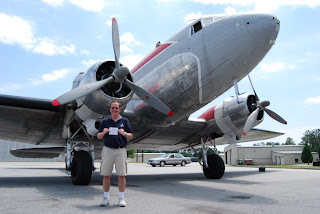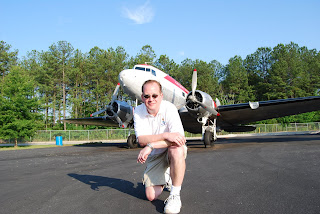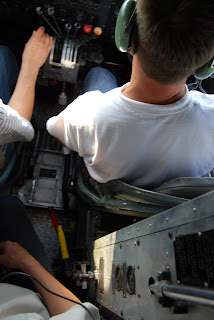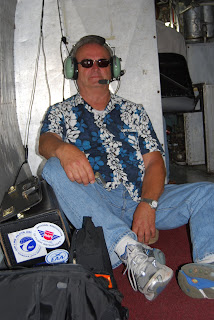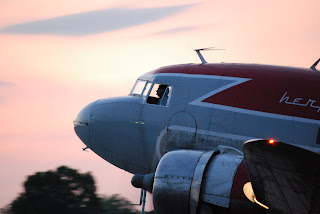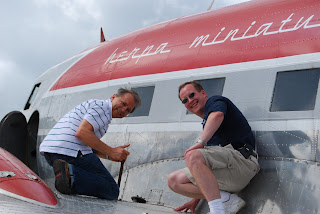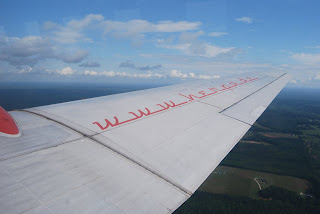Hey, I’m sorry that it’s taken me so long to get back with you guys. I think I left you hanging after Day 1 of training.
It turns out that flying all day, having dinner with your instructor and classmates, whipping out the mandolin and sitting in with the ad hoc DC-3 band until the bar closes doesn’t leave you with enough energy to record a decent podcast episode.
I posted a couple of items on the website at www.airspeedonline.com to keep folks updated, but not everyone goes to the website. So I thought I’d record a quick update to let you know how it went.
After 2.8 hours in the left seat over four flights, 14 takeoffs, 13 landings, two full startups and taxis, and one full-stop landing and taxi in this massive, taildragging icon, I can proudly say that I hold a second-in-command type rating in the Douglas DC-3.
It’s a gorgeous airplane and I still fly her in my sleep. I’ll get into this a little later in what I hope will be a cogent and mildly inspiring full-summary episode in a couple of weeks, but imagine a magical three-day period. You meet three other classmates and find that, as you expected, they’re pilots through-and-through and “get it” on every level. Add Dan Gryder, an instructor who’s an airline pilot probably on his way to or from Dubai as I record this, but whose clear passion is the DC-3 and – more importantly – sharing that passion with others. For fun, have author, pilot, and sometime Uncontrolled Airspace hangar denizen James Wynbrandt show up and cover the class and even get a couple of trips around the patch at the controls. And have Julie Boatman, formerly of AOPA and now of Cessna, show up. Fly a 1938 DC-3 around the countryside and notice that cars are pulling off the road at the approach end of the runway to watch you land. Finish the day at the bar where Dan, James, Julie and I walk in with assorted musical instruments and other implements of destruction and play whatever comes to mind until our fingers are sore.
I spent last weekend in a pilot’s dream. If there’s a more perfect set of friends, circumstances, and aircraft, I have yet to think of it, much less experience it.
So I’ll leave you with this, my last landing in the DC-3. And the obligatory V1 cut on takeoff.
Thanks to Dan, Tom, Roland, Gerrit, James, and Julie for being part of such a great three days. You can see more commentary and pictures at the website at www.airspeedonline.com. I’m heading for the Red Bull Air Races tomorrow in Detroit with Rod Rakic and we’ll probably be posting some content fairly soon, so, if you go to the website, make sure that you scroll down so you can see the DC-3 features. I’ll also make a summary blog entry with links to all of the DC-3 show audio so that you’ll have one-stop shopping for all of the DC-3 material.
And, if you have other questions, you can reach me at steve@airspeedonline.com.
We’ll go out on my last landing and takeoff in the ‘three and look for the summary episode in a few weeks right here on Airspeed!


